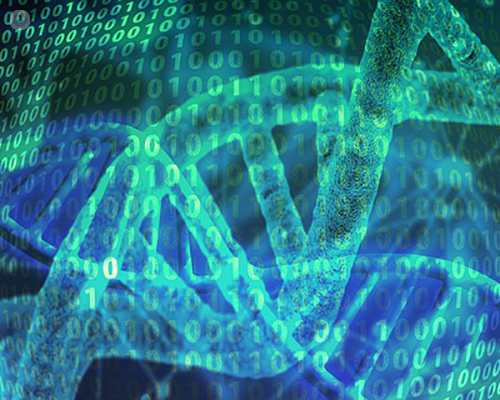Extended genomic testing explained
Autore:All patients with a primary brain tumour should have analysis (what we call “sequencing”) of the genes in their tumour. However, typical panels only look for alterations in 2 – 5 genes. While these are useful, since there are between twenty and thirty thousand genes in a human cell, it means that standard sequencing techniques ignore most of the alterations in tumour cells. In this article, leading consultant clinical oncologist and researcher Dr Matthew Williams offers fascinating insight into the most recent developments in extended genomic testing and how its application is improving outcomes for patients with brain tumours.

What is extended genomic testing?
In addition to sequencing, which looks at changes in the DNA in cells, we can also look at changes in the number of chromosomes, known as copy number variation (CNV). Additionally, we can look at genes that are abnormally joined together to make new, overactive abnormal products (fusions) and changes in the way in which cells control whether DNA is active, or not (methylation).
The final step is to try and move beyond looking at a single mutation, or methylation result, and to try and integrate these results. This is because many brain tumours are able to evade drugs that target a single mutation. We refer to this combined approach as extended genomic testing.
All of these are used in standard care, but as technology has developed, we now have the opportunity to extend the testing we do, and improve the integration of the results to include sequencing, CNV, fusions and methylation using computational approaches.
What is next-gen sequencing (NGS)?
When we first started to being able to read the “letters” in DNA, we read them one-by-one – hence “sequencing” for every gene in the DNA. Although very detailed, those sequencing approaches were also very slow (taking months to run) and very expensive. As technology has developed, the next generation of machines are able to sequence a smaller set of genes, but much more rapidly – hence “next-gen sequencing”. This NGS typically looks at alterations in 5 genes. However, the technology has continued to develop, and we now have the technology to look at hundreds of genes at a time.
What is copy number variation (CNV)?
Sequencing (including NGS) looks for alterations in the DNA. However, it is now obvious that some brain tumours have multiple copies of the same gene. Therefore, even if there isn’t an abnormality in that gene, having several copies of it can effectively make it overactive and if you are missing a copy, that can make it underactive.
What are fusions?
Sometimes, mutations in genes lead to two (normally separate) genes becoming “stuck” together. This means that one half of the new gene has one function and one half has another. These gene fusions are also not picked up in NGS, but can be important, treatable alterations in the way tumours behave.
What is computational modelling and why does it matter?
All of the steps we have outlined above generate a large amount of data. However, tumour cells are complex interconnected webs of activity, and even with this wider analysis, we know that tumour cells have the ability evade treatments that target single mutations. The aim of modelling is therefore to try and integrate the data on mutations to find treatments that when used in combination will hit the tumour cell from multiple directions, and reduce the chance of it resisting treatment.
How can we test for these?
Testing needs some tumour tissue, but only a small amount is required. Tissue that has been taken previously and stored (preserved in formalin and then in paraffin – so-called FFPE) is suitable for this type of analysis, which means that we can often retest tumour samples taken several years ago.
How long does it take?
Actual NGS takes ten to twelve days. However, we need to identify where the tissue is held and then physically move the tissue to the facility that performs the NGS. CNV can take another 2 weeks, and the integrating those results computationally takes another 3 – 4 weeks. In all, I would suggest that patients allow ten weeks for a combination of NGS, CNV and then integrating and interpreting the results.
Which are the best companies to use for NGS and other testing?
This changes, and changes very quickly. I currently use a collection of three different companies, but these are likely to change over time.
What do the results mean?
The aim of using extended sequencing is to try and identify abnormalities in the tumour that are not detected by conventional approaches. By definition, it is difficult to know exactly what abnormalities we might find, but there are some recurring patterns of mutations. Our hope is then to identify either clinical trials or drug treatments that target these abnormalities.
Which drugs do you use after extended genomic analysis?
This very much depends on what abnormalities we find. The aim for using NGS, CNV and computational modelling is to find treatments that are more likely to work for this particular tumour.
If you would like more information about extended genomic analysis or require testing or analysis of results relating to cancer, you can book a consultation with Dr Williams by visiting his Top Doctors profile.


